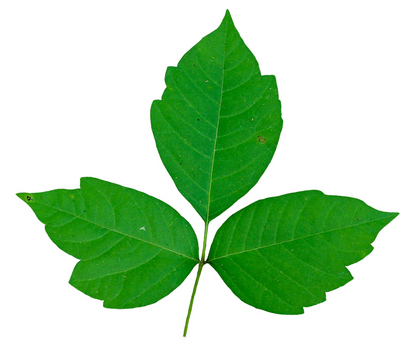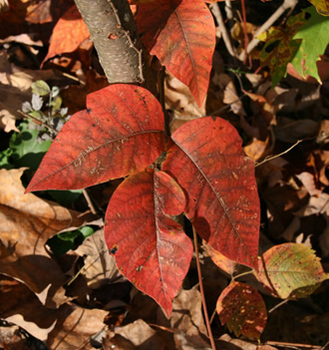Poison Ivy
Family: Anarcardiaceae, cashew family
Genus, species: Toxicodendron radicans
Leaves:
"Leaves of three, leave it be." Poison ivy has three leaflets. Edges of leaves are smooth or coarse-toothed. Leaves sometimes look glossy or shiny.
Flowers:
Male and female flowers are on separate plants (dioecious). Flowers are small, yellowish, appear in May and June.
Fruit:
Fruit is a berry, produced in clusters.
Roots:
Vines develop adventitious (aerial) roots, become attached to trunk of tree.
More Information:
Poison ivy produces urushiol, a skin irritant that produces an allergic reaction, causes an itching rash. Corticosteroids can be used to treat rashes. About 80% of humans are allergic to poison ivy. The resin is oil-based, so it doesn't wash off easily in water. Smoke from burning poison ivy can irritate lungs and throat if inhaled.
Etymology
Toxico- is from the Greek for "poison," -dendron is from the Greek for "tree." The species name radicans is from the Latin for "rooting stems or leaves." The family name Anacardiaceae is from the Latin for "heart-above," referring to the shape of the cashew fruit.
Photos:

